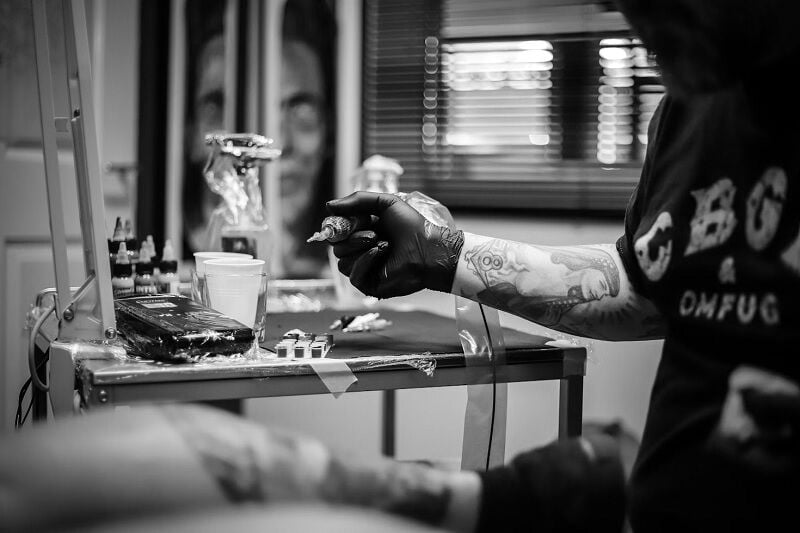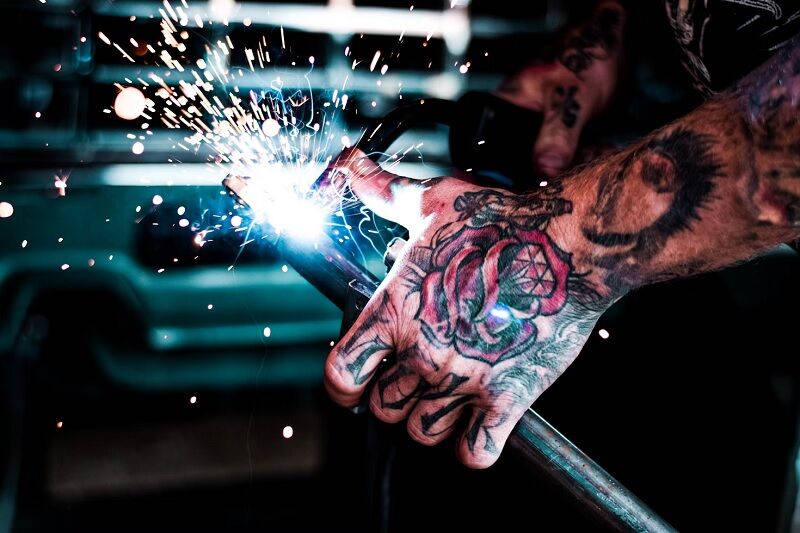Unlocking the secrets behind traditional Thai Tattoos – More than ink

Diving into the world of traditional Thai tattoos, you’ll uncover a realm where art meets spirituality. These tattoos, more than mere body art, serve as a bridge to Thailand’s rich cultural and spiritual heritage.
At the heart of this tradition lies the Sak Yant tattoo, a symbol of protection, luck, and strength. Crafted by revered masters, these tattoos are a testament to the profound bond between the physical and the mystical. Let’s explore the significance that makes these traditional Thai tattoos a coveted spiritual emblem.
Introduction to Thai Tattoo ideas

When you delve into the world of Traditional Thai Tattoos, you’re not just looking at ink on your skin. You’re embracing a piece of Thailand’s soul. This art form, deeply ingrained in the cultural fabric, extends far beyond aesthetic appeal. It’s a spiritual journey, a ritual that connects you directly with the rich tapestry of Cultural Tattoos Thailand embodies.
Your interest in Thai tattoo art signifies more than just an appreciation for intricate designs. It shows a desire to connect with ancient traditions and beliefs that have been passed down through generations. Each tattoo, or ‘Sak Yant’ as known locally, carries a profound significance. These aren’t merely decorations but powerful symbols designed to guide, protect, and bring blessings to the bearer.
Understanding Thai Tattoo Art involves recognizing that these symbols are more than skin deep. They’re a bridge to an ancient heritage, a path to connect with the spiritual world. Whether you’re drawn to the mystique of the Gao Yord or the allure of the Yee Sib Gao Yord, each design offers a unique narrative. They’re not just tattoos; they’re stories inked on your skin, personal talismans that carry the whispers of Thailand’s ancestral wisdom.
As you explore this realm, you’ll discover that each tattoo holds a key to unlocking parts of your destiny and fate, offering protection and blessings along your life’s journey. The beauty of Traditional Thai Tattoos lies in their ability to weave the spiritual with the tangible, offering a profound connection to Thailand’s cultural legacy through the art of tattooing.
The most popular traditional Thai tattoo designs.
Exploring the realm of traditional Thai tattoos, you’ll find that certain designs stand tall in the realm of Thai tattoo art. These cultural tattoos from Thailand aren’t just mere adornments; they’re powerful emblems woven into the very fabric of Thai heritage.
Sak Yant Tattoos top the list, with their intricate patterns and deep spiritual significance. These tattoos serve as more than just body art; they provide protection, strength, and good fortune to those who bear them. Crafted with precision by revered masters, Sak Yant tattoos connect the wearer to Thailand’s rich spiritual traditions.
Among the various Sak Yant designs, the Tiger Sak Yant is particularly revered. Symbolizing power, fearlessness, and protection against evil spirits, this design finds favor amongst both Muay Thai fighters and those seeking the tiger’s mighty essence. It’s not just about the aesthetic; it’s about imbuing the wearer with the tiger’s storied qualities.
Another widely cherished design is the Hah Taew, or the Five Lines Sak Yant. This tattoo, renowned for its broad protective capabilities, appeals greatly to both locals and tourists. The Hah Taew offers a myriad of blessings, from protection to love, and even success, making it a versatile choice for many.
It’s important to remember, however, that the true power of these tattoos stems not from their physical appearance but from the sacred blessings they carry. Authentic Thai tattoo art is deeply entrenched in spiritual practices. Without the proper rituals and blessings from skilled masters, the tattoo loses its essence.
Meaning: Sak Yant tattoos and popular Sak Yant designs
Delving into the world of traditional Thai tattoos, known as Sak Yant, unveils a realm steeped in spirituality and cultural significance. These tattoos serve as more than mere body art; they act as powerful symbols designed to protect, empower, and guide those who bear them. Let’s explore some of the most revered Sak Yant designs that hold deep meaning within Thai tattoo art.
Hah Taew (5 Lines)
The Hah Taew, encompassing five specific lines, acts as a cornerstone in the collection of Sak Yant tattoos. Each line bestows a unique blessing upon the wearer. From safeguarding against danger to attracting luck and positive energy, the Hah Taew ensures a comprehensive protective aura. This design, rooted in ancient wisdom and chanted incantations, resonates with those seeking a shield against life’s unpredictabilities while striving for success and charisma.
Gao Yord (9 Peaks)
Gao Yord, identifiable by its nine spires, stands as the ultimate emblem of protection in the realm of traditional Thai tattoos. Symbolising the mythical Mount Meru, home to the deities, this tattoo channels divine safeguarding from all directions. It’s often chosen as the inaugural Sak Yant by many due to its broad protective powers, making it a potent talisman against adversity. The incorporation of nine peaks aligns with significant Buddhist beliefs, further amplifying its sacredness.
Paed Tidt (8 Directions)
Embarking on a journey adorned with a Paed Tidt tattoo means you’re never alone. This powerful design, featuring intricate patterns that represent the eight cardinal and ordinal directions, equips you with all-around protection and guidance. Ideal for travellers, the Paed Tidt symbolises safety in movement and adventure, ensuring that you remain sheltered from harm no matter where your travels take you. It’s a testament to the interconnectedness of the universe and our place within it.
Suea Koo (Twin Tigers)
For those who seek strength and courage, the Suea Koo or Twin Tigers design embodies these virtues in the most formidable manner. This tattoo symbolises fearlessness, power, and the ability to overcome life’s challenges with confidence. Wearing the Suea Koo design, you carry with you the spirit of these majestic beasts, a constant reminder of your own inner strength and tenacity. It’s a popular choice among those devoted to personal growth and the embrace of life’s battles with unwavering courage.
Each Sak Yant design holds a unique message and purpose, deeply woven into the spiritual and cultural fabric of Thailand. Embracing a Sak Yant tattoo means more than just adorning your body with art; it signifies a profound connection to age-old traditions, safeguarding your journey through life with blessings, protection, and guidance. As you consider incorporating Thai tattoo art into your life, remember the unparalleled depth and significance these designs carry.
Places to Get a Traditional Sak Yant in Thailand – Outside Bangkok

While Bangkok stands as the epicenter for Sak Yant, several other locales across Thailand offer this quintessential experience. Cities like Chiang Mai, Phuket, and Sukhothai also house masters adept in the ancient practice. Each location boasts its unique charm, but the essence of the cultural tattoos in Thailand remains consistent. Venturing outside Bangkok opens up new realms of discovery. You’ll find Ajarns who have honed their craft over decades, each bringing a unique touch to the traditional Thai tattoos. Embracing this adventure across Thailand not only enriches your understanding of Thai tattoo art but also allows you to witness the diversity of cultural tattoos Thailand has celebrated for centuries
Whether you’re drawn to the protective powers, the connection to Muay Thai, or the sheer beauty of the tattoos, it’s essential to approach this ancient practice with respect and understanding. Remember, finding the right master is key—not only for the quality of the tattoo but for the spiritual journey it represents. So if you’re ready to take this step, ensure you’re prepared to honour the traditions and responsibilities that Sak Yant demands.
You can also explore, the Thai traditional dress set to be listed on UNESCO, The Ministry of Culture is gearing up to propose the inclusion of Thai traditional dress in UNESCO‘s prestigious intangible cultural heritage listings. The visionary behind this move is none other than Kowit Pakamart, the director-general of the Department of Cultural Promotion.
Latest Thailand News
Follow The Thaiger on Google News:


























